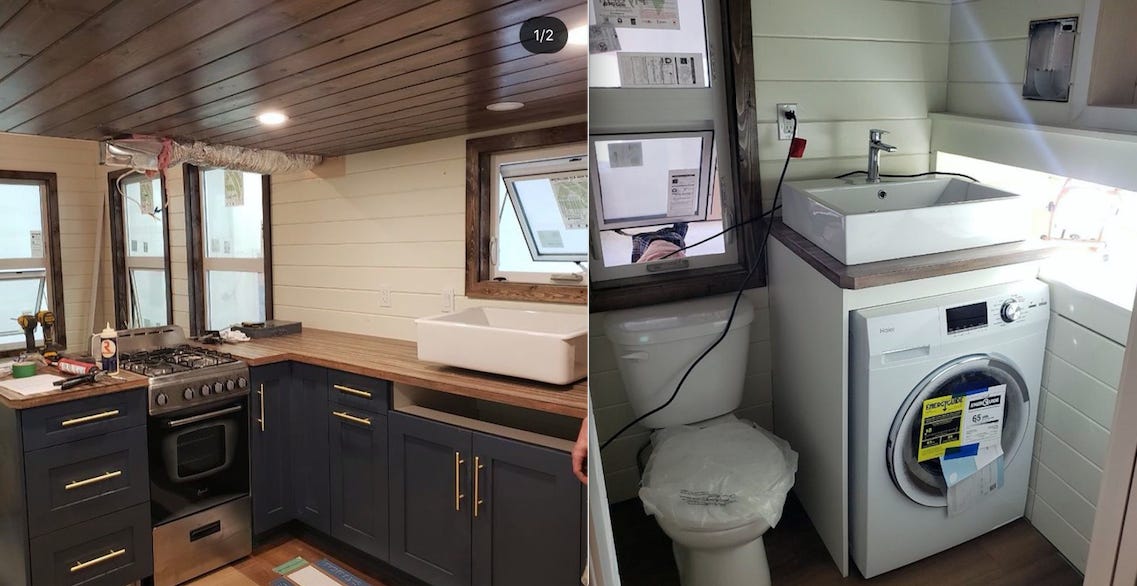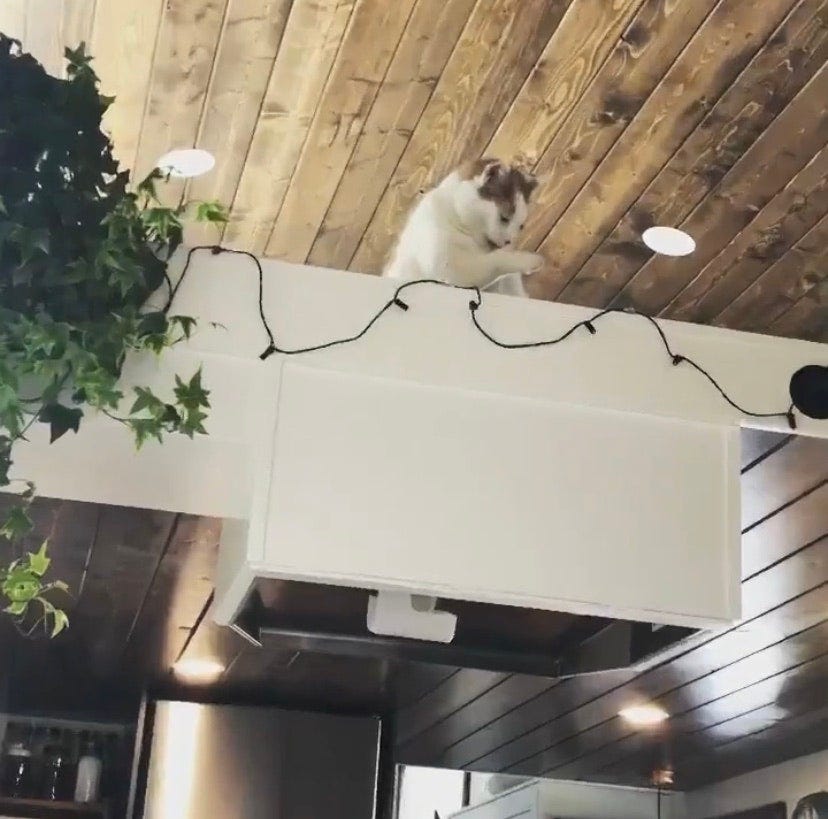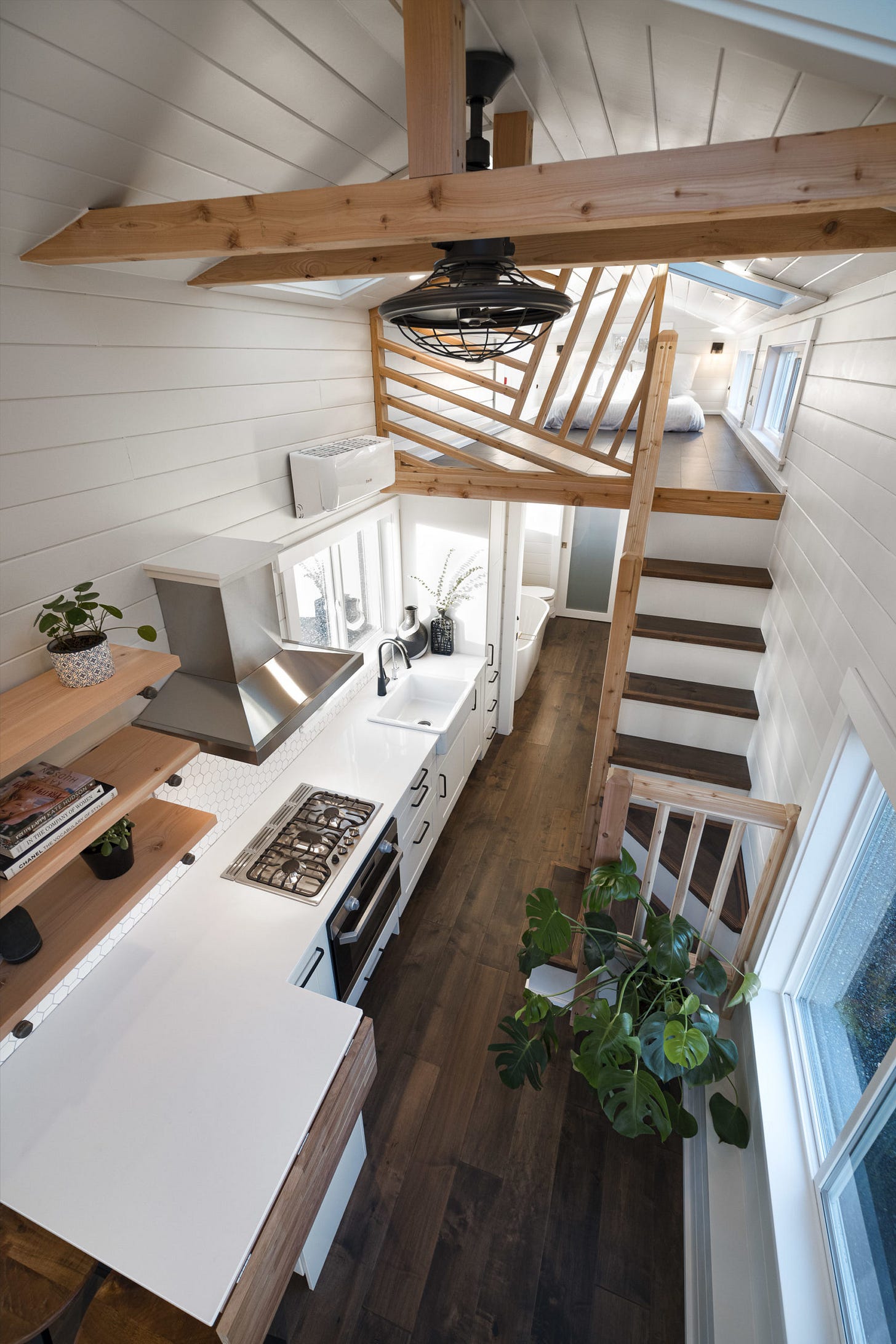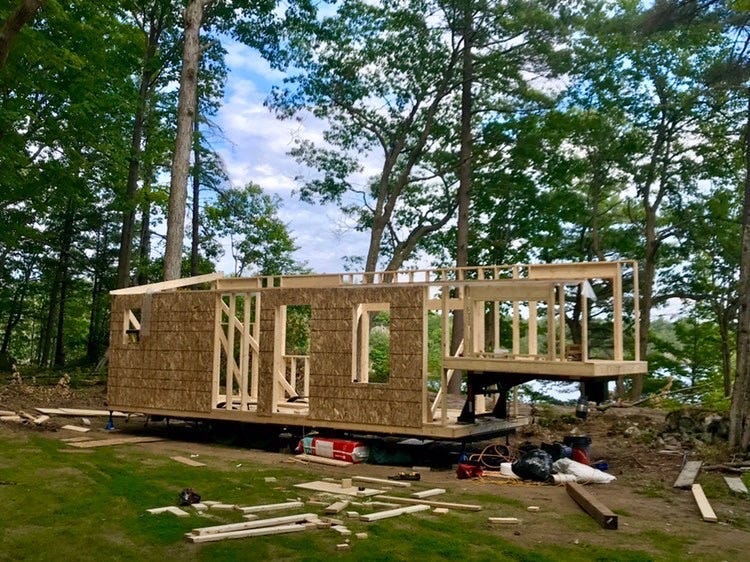A Happier Style of Living: Tiny Homes
Ever wonder what it takes to build a tiny home? From ideas to lifestyle changes and total costs, we show you the insiders' point of view into the world of Canadian Tiny House Living
Welcome back to Humber Views, a newsletter featuring unique communities and subcultures. Today we bring you a multimedia story about tiny home living. If you enjoy today’s piece, hit subscribe for more!
“This is the life for me, I have everything I could ever dream of”: Tiny house dwellers explain their switch to small
Tiny house living is a growing phenomenon about living larger with less. Proponents say it’s a style of living that promotes minimalism, simplicity, and efficiency — all while having more economic freedom — and forgetting the ways of a materialistic lifestyle.
In a Global News article, Kenton Zerbin, an Edmonton-based sustainable living expert said he thinks the most important factor for considering tiny house living is the cost,
“At the end of the day, when you have to get into a quarter million, half a million dollars to get into a property, for many people today in an uncertain time, with uncertain wages and uncertain jobs, it’s just not feasible” he said.
We wanted to find out whether tiny house living is really worth the hype. After speaking to two tiny house home owners from opposite ends of the country, we got a better feel for their lifestyle.
Time for “momma to go on an adventure”: ADELINA BANKS

Adelina Banks is a single mother of two grown sons living in Calgary. She chose to make this tiny house lifestyle change five years ago and since then it has been a slow and steady process that’s taken a lot of time and patience.
When it was time for Adelina to start this new chapter in life, she told her sons that it was time for “momma to go on an adventure.” She wanted to start living intentionally and get rid of unnecessary stresses and burdens. There were a lot of people that didn’t understand why she was making such a drastic lifestyle change and she said, “I had to realize they wouldn’t understand and that’s okay.”
“I want experiences versus things,” she said.
She wanted to build her tiny home from the ground up the right way — and most importantly to her, the legal way. Today she says she has the only legally-parked tiny home in Calgary, having paid a lump-sum of money to build by code and be registered through the Canadian Tiny House Alliance.
By nature Adelina is an organized person, so she says it was an easy adjustment for her to move into a small space. She designed a layout that would be easily customizable and adjustable. She keeps the loft space above the kitchen clear where her cat often hangs out. She decided to create this space for any future guests who decide to spend the night.
“If my son wanted to take on this space one day, this could be a space for his music studio” she said.
DESIGN & EXPENSESAdelina’s one wish when building was to be able to stand in her bedroom, so she designed the left side of her home, where the gooseneck of the trailer sits, just for her bedroom space. A gooseneck trailer, like the one Adelina had custom built, is one that attaches to a track by sliding over a ball hitch in the bed of a pickup truck with controls its swaying motion when being pulled. It is one of the more stable types of trailers and allows for more weight to be built on-top of it.
She had also requested custom cabinets for her kitchen to maximize space and utility, put an in shower tub for her future plans of having a dog, and installed an in-unit washer and dryer combo. Her home runs predominately on electricity which is provided by the mobile-home park she is located at. They charge her an annual fee of $815.00, which includes water, sewage, garbage and recycling.

Adelina says it’s important for a tiny house to be customizable, so not every one will be the same. Each tiny house needs to cater to the needs and wants of each individual. With all of the custom work, Adelina spent a grand total of approximately $154,000 — a price she said was worth paying for what she wanted. Her goal is to one day be 100% off the grid and reduce her environmental footprint as much as possible.
FUTURE GOALSAdelina’s adventure won’t end here. This past summer she had planned to move her home to her dream location of Vancouver Island. The pandemic threw those plans off track, but she plans to make that trip next year. She’s worried about how the home will handle the drive through the long mountainous highways of Alberta, but her gut tells her everything will turn out okay. Once she arrives in BC she wants to settle down and eventually invest in a van to create an even tinier home on wheels.
Once on this journey she will be able to begin her planned podcast she’d like to call Microphones On Tiny Homes. Adelina has already started capturing her journey through her Instagram account and Youtube channel.
To follow Adelina’s journey find her on these platforms:
Mint Tiny House Company
We spoke to Jordan, a representative for the Mint Tiny House Company about the process of constructing a tiny home. The company’s main office is located in Delta, British Columbia and has grown to be the largest tiny home manufacturer in the Northwest with a goal of manufacturing 70 homes per year.
“We focus on how to make a tiny home into a dream home, while keeping it travel friendly, minimal and budget friendly,” Jordan said.
Customers come from all over, including California, New York, British Columbia and even Hawaii. The one commonality among people from all of these places is how difficult it is for them to feel at home in big cities. She says the key to living a better quality of life is simply living with less.
On their website, the company says they are “passionate about reducing our carbon footprint and helping others to do the same.” Everything is done in-house while using eco-friendly materials such as wool insulation that works just as well as standard insulation.
Jordan provided us with the original quote and layout for their Loft #8 model, giving you a better idea of the expenses.
Click the button below to be directed to their website and get in contact with Jordan for more information.
“We wanted to be able to travel and enjoy adventuring in nature without the worry of rent or mortgage payments”: SIMONE & ISAAC
Simone is a young newly-graduated art student. Her and boyfriend Isaac were tired of the exorbitant rent prices and the fast-paced lifestyle of Toronto where they were both working students.
Last summer they moved east of the GTA while still managing their commute into Toronto, but when the pandemic hit they were fortunate enough to drop the commute altogether and move further out east to live with Isaac’s family. While living with the family, they started their research into tiny house living, and then started construction in June of this year.
“I’ve always wanted to live in the woods and to be able to save money in the long run and to live as sustainably and as off the grid as possible,” Simone says.
“We wanted to be able to travel and enjoy adventuring in nature without the worry of rent or mortgage payments.”
Still a work in progress, their tiny home now has heat and electrical, and they are working on installing solar panels and a lake-water system. All of the heating and cooking will be powered by propane which they describe as the most sustainable and affordable option. They are hoping to move in within the next few weeks, after just five months of building.
To start off, they purchased a second-hand trailer measuring ten-feet wide. The home they built on top is approximately 400 square feet — as Simone notes, “it is the size of a small Toronto studio apartment.”
Simone and Isaac got a lot of help from their family and friends. Isaac’s father previously built his own (regular-sized) house, so his own experience helped. Framing was done by a cousin, while family electricians also lent a hand. Along the way some purchases came as a shock. The high cost of off-the-grid appliances and the “COVID-19 Lumber Shortage” sent their budget upwards.
OVERALL EXPENSES So far though, her and Isaac have spent about $20,000 and are hoping to complete the home for around $30,000. They acknowledge it would not be possible without the labour help they received as well as purchasing many pre-loved items off of Kijiji and Facebook Marketplace. They also received some donations from friends of the contractor like leftover flooring, insulation and windows. Although, it’s a large amount of money, Simone is quick to compare it to the alternative.
“The total tiny home cost will be the price of a year’s worth of renting a one bedroom in Toronto… and there’s two of us,” she said. “An expensive year, but several years rent-free will follow.”
Related articles:
About the Authors: Emma Harris (left) and Tatiana Furtado (right)
Emma Harris is a third-year journalism student at Humber College. She is an international student from Trinidad and Tobago with a strong passion for writing about lifestyle and culture. Follow her journey through her website at emmaharrislb , her twitter @emma_eh11 or reach out to her via email at emmaelizabethharris@hotmail.com
Tatiana Furtado is a third-year journalism student at Humber College. She has a love for researching stories about culture and the arts and gives a voice to those that don’t necessarily get the chance to speak. Reach out to her via email at tatiana.furtado8@gmail.com or follow her twitter at @tatianafurtado0.











